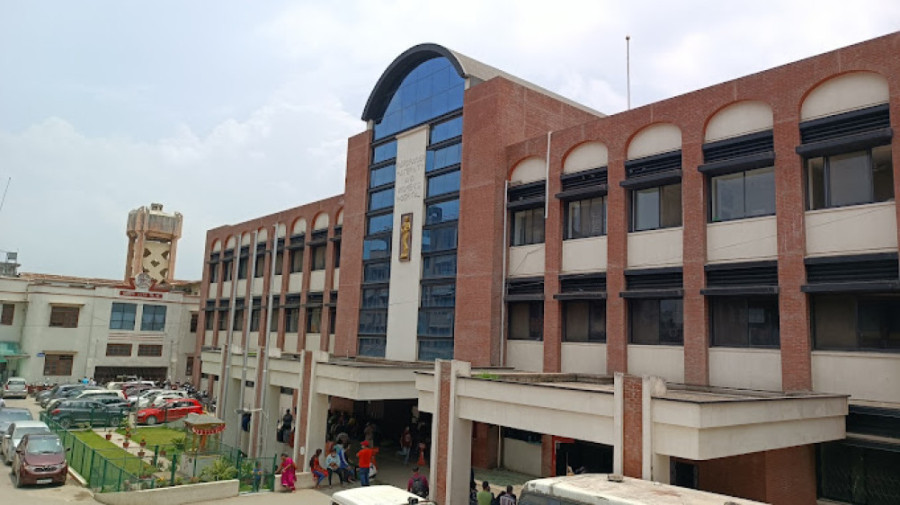Health
Maternal and newborn health simulation labs set up in Thapathali maternity hospital
The lab helps doctors and nurses, among others, practise and develop clinical expertise without risking patient safety.
Post Report
The Thapathali-based Paropakar Maternity and Women’s Hospital is all set to bring into operation a simulation lab, which provides practical knowledge to healthcare professionals—doctors and nurses—without risking patient safety.
Officials hope that the simulation laboratory bridges the gap between classroom learning and clinical practices, which will ultimately help students and health workers improve their skills.
“Doctors and nurses will first develop their clinical decision-making skills in a controlled life-like environment that poses no risk to patients,” said Dr Shree Prasad Adhikari, the hospital’s director. “We are working to bring the laboratory into operation within a month.”
The simulation lab is a state-of-the-art facility designed to educate, evaluate and prepare medical practitioners to carry out normal and cesarean delivery and other surgeries. The laboratory facilitates skills-based, face-to-face training for healthcare workers by allowing them to practise and refine their life-saving skills under the supervision of experts.
One Heart Worldwide, an international organisation that works in maternal and neonatal safety, has provided financial support to set up the laboratory. Apart from the Paropakar Maternity and Women’s Hospital, the organisation has also committed to providing financial support to set up such labs in Koshi Hospital, Narayani Hospital, Province Hospital Surkhet, BP Koirala Institute of Health Sciences, Pokhara Academy of Health Sciences and Madhesh Institute of Health Sciences.
Doctors say hospital staff will first improve their skills on dummies in the laboratory, develop expertise, and then apply the expertise while treating the patients, which will lessen the risk to patients—new mothers and neonates.
“Hospital staff, mainly new doctors and nurses, will learn essential care for labour and birth, bleeding and after birth care, and helping babies breathe (HBB) modules,” said Adhikari. “We have set up the laboratory in our Kupondole wing. Fifteen to 20 health workers can receive training at once in the laboratory.”
Postpartum haemorrhage—or severe bleeding after childbirth—is the largest direct cause of maternal mortality worldwide and is responsible for more than a quarter of the 300,000 estimated maternal deaths each year.
Every year, hundreds of women in Nepal succumb to preventable deaths from excessive bleeding and high blood pressure, according to a report in the national census by the National Statistics Office, which was carried out in 2021.
The report, however, shows a significant decline in the maternal mortality rate; hundreds of women across the country continue to die due to excessive bleeding and high blood pressure.
The report showed that in every 100,000 live births, 151 women died from maternity-related complications that year.
Nepal had reduced the maternal mortality rate from 539 per 100,000 births in 1996 to 239 per 100,000 births in 2016—for which the country even received a Millennium Development Goals award.
Nepal’s target under the UN’s Sustainable Development Goals is to reduce the maternal mortality rate to 75 per 100,000 births by 2030.
Likewise, the government’s target for Sustainable Development Goals is to reduce neonatal mortality to 12 deaths per every 1,000 live births by 2030. At present, 21 neonates die in every 1,000 live births.
The government has been taking various measures to reduce neonatal deaths, including a plan to set up a ‘special newborn care unit’ in all district hospitals throughout the country.




 23.12°C Kathmandu
23.12°C Kathmandu














